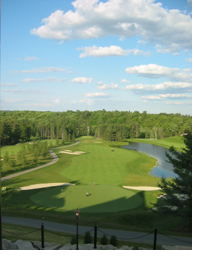Tips on Choosing the Right Golf Wedge
Many golfers – especially those with lower handicaps - believe that choosing the right golf wedge is one of the most important equipment decisions you can make. Sure, you drive for show and putt for dough, but your wedges are your scoring clubs, and playing the right wedges is vitally important for going low.

Most amateur golfers carry two wedges in their bags – a pitching wedge and a sand wedge. In contrast, most pros carry three or four wedges, adding a gap and often a lob wedge. Four wedges represents almost a third of their clubs, indicating just how important the pros think the right wedges are. But with all the choices out there, how do you know if you’re picking the right golf wedge?
The first thing to realize is that using the right golf wedge can actually involve choosing more than one club. Wedges have many different lofts (it could be as low as 44 or as high as 64 degrees, with several different lofts in between). Different lofts (and therefore different wedges) are used for different purposes. Wedges can also differ in their bounce angle, and once again different bounces are suitable for different types of shots.
All of this means there are several factors to consider when you’re picking the right golf wedge: the total number of wedges you should carry and their lofts; the shaft (type and flex); and the bounce angle. Here’s some information about each of these factors.
Number of Wedges and Their Lofts: The first thing to determine when you’re choosing the right golf wedge is how many wedges you should carry. As mentioned above, most amateurs have two – a pitching wedge and a sand wedge. But by choosing the right golf wedge to add to those two, you could improve your short game significantly.
There’s a good chance you have a large gap between the lofts of your pitching wedge and sand wedge. If your irons are more than a couple of years old, you probably have a 48-degree pitching wedge and a 54- or 56-degree sand wedge. If your irons are pretty new, the loft of your pitching wedge might be even lower (44 or 45 degrees), making the gap between your two wedges even greater. Because 10 degrees of loft is usually equal to about 30 yards of distance, you’ll have at least that much of a distance gap between your two wedges. That’s far too much, and you’ll probably be taking a lot of half-swings. Partial swings are one of golf’s hardest shots, and you want to avoid them whenever possible. Ideally, you only want a 5-degree gap between your wedges. You can solve this problem by choosing the right golf wedge – in this case, a gap wedge with 49 or 50 degrees of loft. I’m a firm believer in gap wedges, and mine is one of my most frequently-used clubs.
Depending on your skill level, you might also find that choosing the right golf wedge involves adding a lob wedge to your bag. Hitting these high-lofted clubs well can be tricky, but they can be stroke-savers around the green. Lob wedges aren’t for the faint of heart or beginners, though. If you decide that choosing the right golf wedge means buying a lob, you’ll need plenty of practice to learn how to hit it effectively.
Shaft (Type and Flex):
When you’re choosing the right golf wedge, make sure the shaft is the right type and has the right flex. Consistency in the clubs throughout your bag is important, so if your irons have graphite shafts you’ll probably want your wedges to have graphite shafts too. Likewise, if your other irons have regular-flex shafts, you’ll probably want that flex for your wedges. And don’t forget to try to find shafts that weight about the same number of grams as your other iron shafts. Consistency in your wedge’s shaft is especially important in a gap wedge, since it slots in between your pitching wedge and sand wedge.
Bounce Angle
The amount of bounce you need will be determined by your swing and the course conditions where you play most often. If you’re a “digger” (your swing is steep and you take a big divot), you’ll need plenty of bounce. If you’re a “sweeper” (you clip the ball cleanly off the ground and don’t take much of a divot), you’ll need very little bounce. If you’re a “slider” (your swing isn’t too steep or too shallow and your divots are small and thin), choosing the right golf wedge will involve finding one with a moderate bounce.
Course conditions also play an important role in choosing the right golf wedge. If tight lies are common, the bunker sand’s firm and the ground is often hard, choose a wedge with a low bounce angle. Plush grass, powdery soft sand and softer ground make a higher bounce angle the best choice.
From "choosing the right golf wedge" to golf club reviews.



New! Comments
Have your say about what you just read! Leave us a comment in the box below.